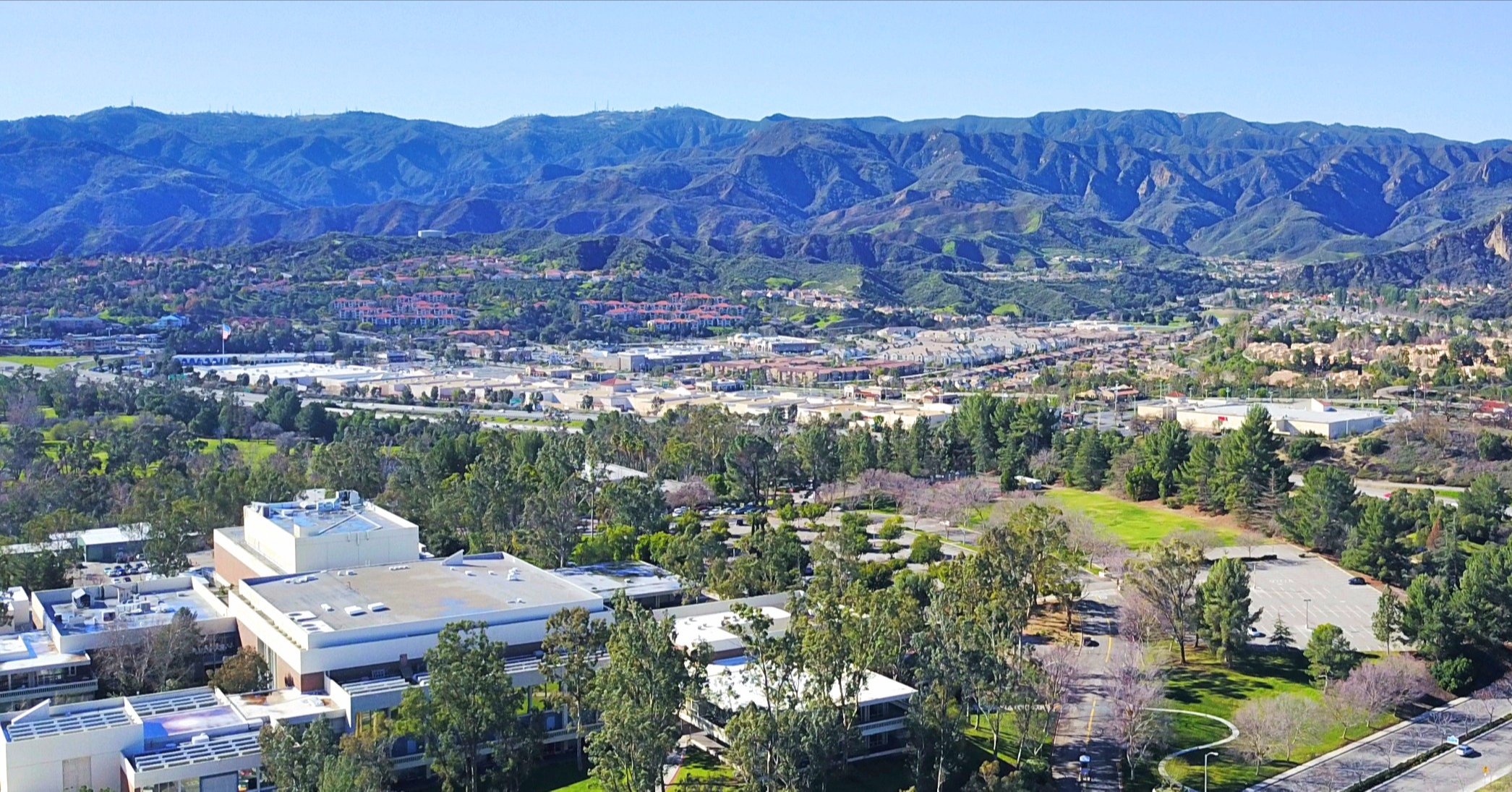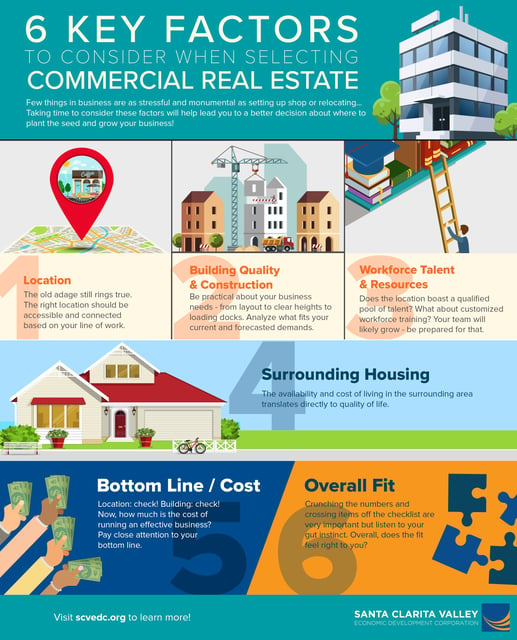6 Key Factors to Consider when Selecting Commercial Real Estate
Few things in business are as stressful and monumental as setting up shop or a move. Besides the difficulty of relocating your employees, equipment, and other assets, there’s the looming threat of choosing a new location that just won’t work out…forcing yet another move.
Even if you’re desperate to sign a lease on a new location, it pays to take some time to consider a few factors (some obvious and some less so) that will play into how you select your new commercial space, and how that will affect your business.
Here are six key factors to consider when selecting commercial real estate that will help you make an educated and confident decision:
Location, location, location! The old adage still rings true for a reason. Location impacts everything from how happy your employees are, to available customers, to dependable supply chain.
Some questions to contemplate are:
- Is the location properly zoned for your particular business type?
- Does the location give you the access you need to major hubs and existing clientele? If so, is it convenient?
- Currently (or in the foreseeable future), does the location fall in line with the ideal industry clusters your business should be surrounded by?
- Is there a strong sense of community culture?
The right location will inform many of the other factors, thus, this should be carefully considered.
2. Building Quality and Construction
Once you’ve got your location nailed down, it’s time to start looking at buildings. It may seem obvious but make sure the building suits your business needs – there’s no point in looking at a building meant for office work when you need a factory floor!In terms of efficiency and productivity:
- Will the facility layout be conducive to your operations?
- Does the building offer high clear heights?
- If an applicable business demand, does the building have the optimal number of loading docks with the most useful combination of dock heights?
- Is there space for expansion or will you be locked into what’s already there?
“A building is a building is a building – what could possibly go wrong?” Building quality does matter. Older facilities may present attractive lease rates; however, your bottom line will likely suffer. Bear this in mind before jumping into an offer that is too good to be true.
Additionally, be sure to consider how many employees you have today, and how many you plan on having five or ten years from now. If the building can’t accommodate your growth, it’s not the right building for you.
3. Workforce Talent and Resources
Speaking of growth, if you plan on hiring new employees, it pays to look at the talent pool in the area.
- Are there enough skilled workers available?
- How’s the local education? A peek at how schools in the area perform can give you a good idea of the talent pool you can select from down the road.
- What type of customized workforce training is offered?
4. Surrounding Housing
How’s the housing market in the area?
Besides being a good indicator of the area’s overall economic heath, an abundance of good, affordable housing nearby means employees won’t have to deal with a nasty commute or an outrageous cost of living.
This translates directly to quality of life and, in turn, will increase the likelihood of your employees sticking around for the ride.
5. The Bottom Line
The area looks great. The building looks great. Now, what is the cost of doing business there?
Yes, think about things like:
- Renovation costs
- Rent
- Utilities
- Security
- Parking
- Internet connectivity
But also consider the opportunities to subsidize those costs. Many local, state, and federal incentives are available in one form or another, including tax exemptions, rebates, and credits.
6. Overall Fit
This may not be the most important item on the list, but it does weigh on all your other decisions. Crunching the numbers and crossing items off the checklist are crucial but don’t ignore your gut feeling. Overall, does the fit feel right to you?
Is this a long-term investment? Does it seem like you and your employees will fit in? Will your company be welcomed? Can you add to the area’s economy and culture in a meaningful way?
Taking the time to consider these factors will help lead you to a better decision about where to grow your business, and how that growth might look in the coming years.
If you are wondering if the Santa Clarita Valley could be the right location for your business...
DOWNLOAD OUR RELOCATION GUIDE to learn more or CONTACT US to discuss what Santa Clarita Valley has to offer!>
The Santa Clarita Valley Economic Development Corporation (SCVEDC) is a unique private / public partnership representing the united effort of regional industry and government leaders. The SCVEDC utilizes an integrated approach to attracting, retaining and expanding a diversity of businesses in the Santa Clarita Valley, especially those in key industry clusters, by offering competitive business services and other resources.
.png?width=1198&name=EDC_cmyk_orange-white%20horizontal.F%20(1).png)




